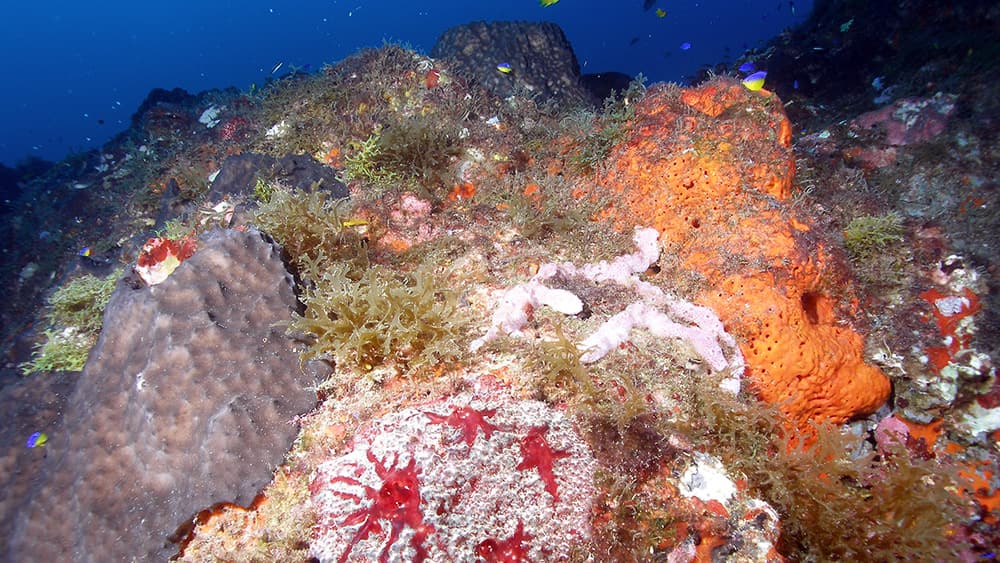Stetson Bank

Depth Range: 56-200 feet (17-61 meters)
Distance from Land: 80 miles (129 km)
Area: 1.4 square miles (3.6 sq km)
Stetson Bank, located at the westernmost end of the sanctuary, is an oblong, mid-shelf bank made of uplifted siltstone and claystone. It was added to the sanctuary when Congress reauthorized the National Marine Sanctuaries Act in 1996.
The original boundary was a rectangle around the bank. This excluded some portions of what we now call the Stetson Ring, a group of deep habitat features that surround the bank, because it was unknown at the time.
Coral Community
The reef crest of Stetson Bank is considered a coral community, rather than a true coral reef. Since it is further north than the Flower Garden Banks, it is cooler in winter and therefore doesn't support much reef-building coral. Instead, it is dominated by algae, sponges, and fire coral.

Rocky outcroppings rise alongside gravelly sand flats populated with clusters of tube sponges. A fair amount of algae grows in the flats at certain times of year, while at other times it can seem quite barren.

Sponges of every conceivable color and shape cover large sections of the reef.

Erosion of the softer layers of the upthrusted rock formations has resulted in distinct, parallel ridges at many locations.

The highest peak of Stetson Bank is known as Sierra Madracis because of the predominance of Madracis decactis (ten-ray star coral) growing there. It is a hub of activity for thousands of fish and home to many large spiny lobsters. No other section of the bank has such a high concentration of coral.

Stetson Ring
A circle of low profile features in the deep area surrounding the bank was first mapped in 1997 and identified as an important part of the salt dome formation. Additional mapping conducted by FGBNMS over many years completed the Stetson Ring dataset, and in 2021 the boundary was expanded to include the entire ring.
Uplifted siltstone and claystone boulders are the main features of the ring, which provide mesophotic habitat for black corals, octocorals, sponges, invertebrates, and many of the same fish species seen on the reef crest.



Who Was Henry Stetson?
Henry C. Stetson (1900-1955), a Woods Hole Oceanographic Institute geological oceanographer, designed early seafloor coring and dredging equipment for exploration. He was the first person to identify the existence of corals on the Flower Garden Banks in 1953.

